In the local language of the Muong people, tadpoles are affectionately called ‘bu bu’ or ‘bau bau’. Contrary to the common perception of these creatures as tiny, the tadpoles here are plump and can be as big as a finger. They carry a unique flavor that can only be found in the pristine and cool mountain streams.
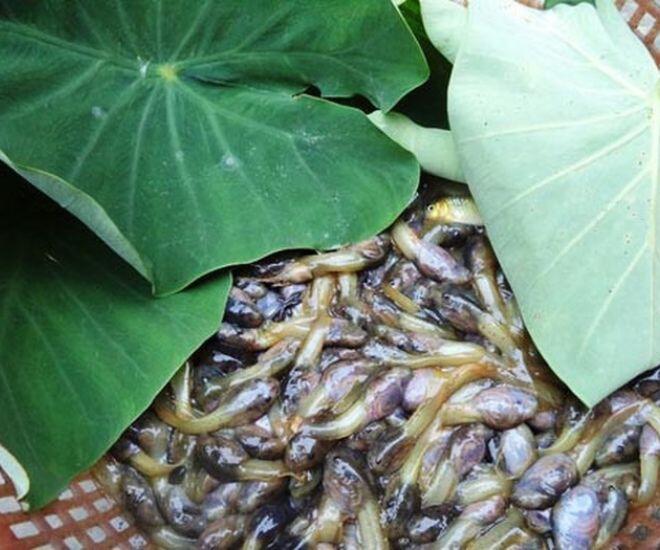
The ideal time to catch these tadpoles is from the 6th to the 11th lunar month every year. During this period, the forest streams become cooler and quieter, providing favorable conditions for tadpoles to gather and feed at the small stone crevices. The unique flavor of Thanh Hoa tadpoles lies in their origin – they are the offspring of stone frogs, a species of amphibian that inhabits the natural forest environment, completely untouched by agricultural chemicals.
Tadpole hunting does not require sophisticated tools but relies mainly on the experience and dexterity of the locals. With just a simple bamboo stick, a bamboo basket for holding the catch, and a few ‘khoan’ leaves as bait, the locals can harvest a large number of tadpoles. The secret lies in gently dropping the ‘khoan’ leaves into the stream, creating a distinctive aroma that attracts the tadpoles. When a multitude of these little creatures gather to feed, the hunter simply lifts the bamboo stick, gently scooping up a plentiful catch of fresh tadpoles.
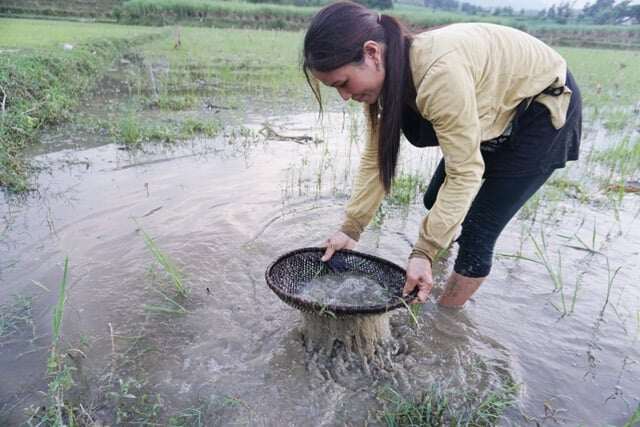
Once brought home, the tadpoles undergo a meticulous cleaning process. They are first washed, then carefully gutted with a sharp knife, washed again, and finally drained. This careful step ensures that the tadpoles are thoroughly cleaned while retaining their natural flavor.
From these fresh tadpoles, the Muong people create a variety of delicious dishes. Tadpoles can be cooked in soup with wild vegetables, resulting in a sweet and refreshing taste. They can also be marinated with lemongrass and chili before being stir-fried or grilled, imparting a distinctive spicy and pungent flavor characteristic of mountain cuisine. However, the most revered and beloved dish, considered the pinnacle of tadpole cuisine, is the tadpole and bamboo shoot stew.
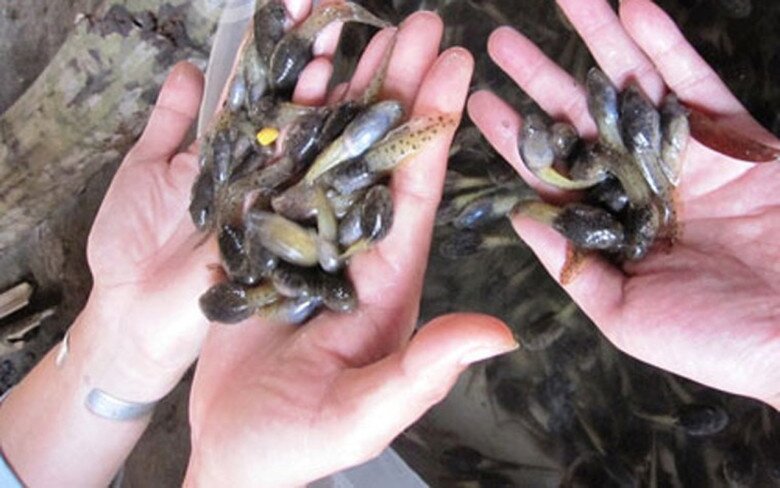
Preparing the tadpole and bamboo shoot stew is not complicated, but it requires a delicate selection of fresh ingredients. The dish calls for fermented rice, onions, and Chinese chives, with the key ingredient being fresh bamboo shoots from the forest. The combination of these natural ingredients creates a unique and distinctive flavor profile.
To prepare the stew, the fresh bamboo shoots are stir-fried with fermented rice until they are just cooked. Boiling water is then added to the pot, followed by a bowl of prepared tadpoles. The mixture is brought to a boil again, and finally, some chopped spring onions, coriander, and Chinese chives are sprinkled on top. After a few seconds, the dish is ready to be served hot. The tadpole and bamboo shoot stew is typically enjoyed with steaming white rice or as an accompaniment to alcoholic drinks during intimate gatherings.
When this stew is served, the white, plump tadpoles nestled among the golden bamboo shoots may initially give some first-time diners pause. However, if one can overcome the psychological barrier and take a brave bite, they will discover a world of surprising flavors. The tender tadpoles melt in the mouth, releasing their distinctive aroma and a subtle bitterness from the forest bamboo shoots, all harmoniously blended with the rich and savory broth.
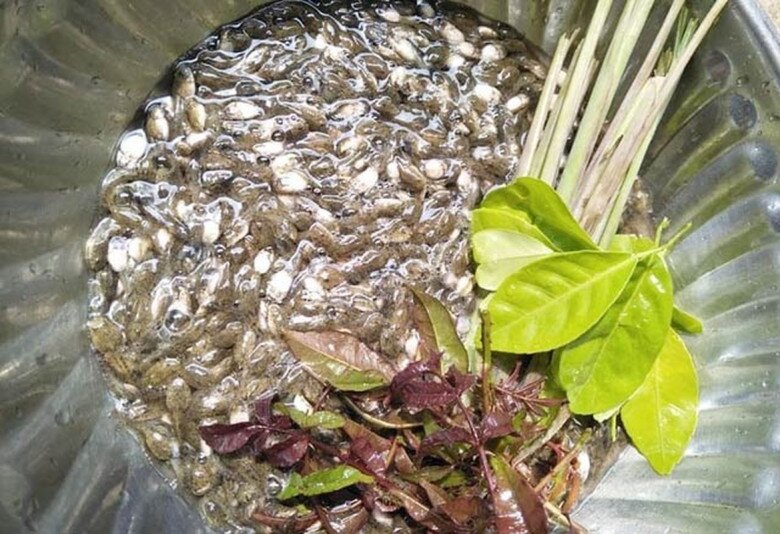
The Muong people firmly believe that “no meat, be it chicken, duck, buffalo, or beef, can match the taste and nutritional value of tadpoles.” This conviction stems from the fact that bu bu tadpoles grow up in a natural environment, where fields and streams are free from chemical contamination, ensuring a clean source of food. Moreover, due to the limited catch and sporadic availability of tadpoles, they are considered a rare delicacy, symbolizing the Muong community’s appreciation for nature’s gifts.
If you have the opportunity to visit the Muong villages in Thanh Hoa during tadpole season, do not hesitate to accept the invitation to partake in this unique mountain delicacy alongside a glass of local liquor. It will not only be a culinary experience but also a chance to immerse yourself in the local culture and gain insights into the life of the Muong people.
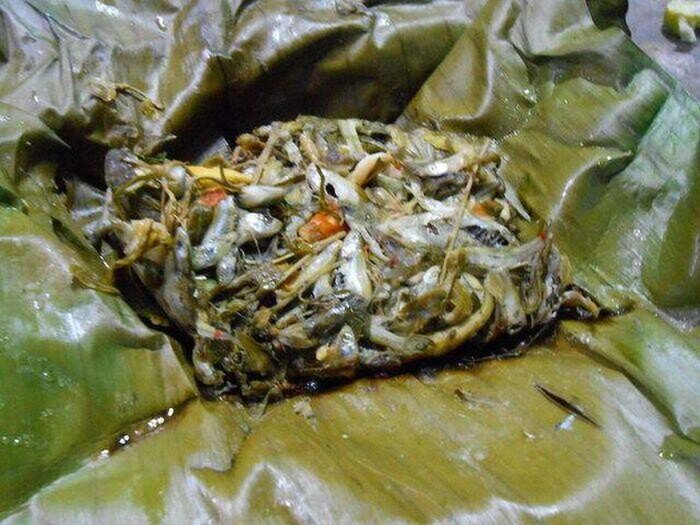
Tourists can also purchase fresh tadpoles at the markets in Thach Thanh district, near the Vó Ấm stream flowing from Cuc Phuong National Park, or at the Na Meo international border gate market. Prices range from 40,000 to 50,000 VND per kilogram. However, according to local experience, the flavor of tadpoles prepared in other regions, especially in the lowlands, rarely compares to the freshness and authenticity of those enjoyed in the mountains of Thanh Hoa.
Apart from Thanh Hoa, tadpoles also feature in the cuisine of other regions such as Ba To (Quang Ngai), Lam Dong, and Nghe An. However, each region imparts its unique twist in preparation and flavor, contributing to the diverse tapestry of Vietnamese gastronomy. The bu bu tadpoles of the Muong people in western Thanh Hoa are not just a culinary delight but also a testament to the harmonious relationship between humans and nature, reflecting the rich cultural heritage and distinct regional flavors of Vietnam.


































